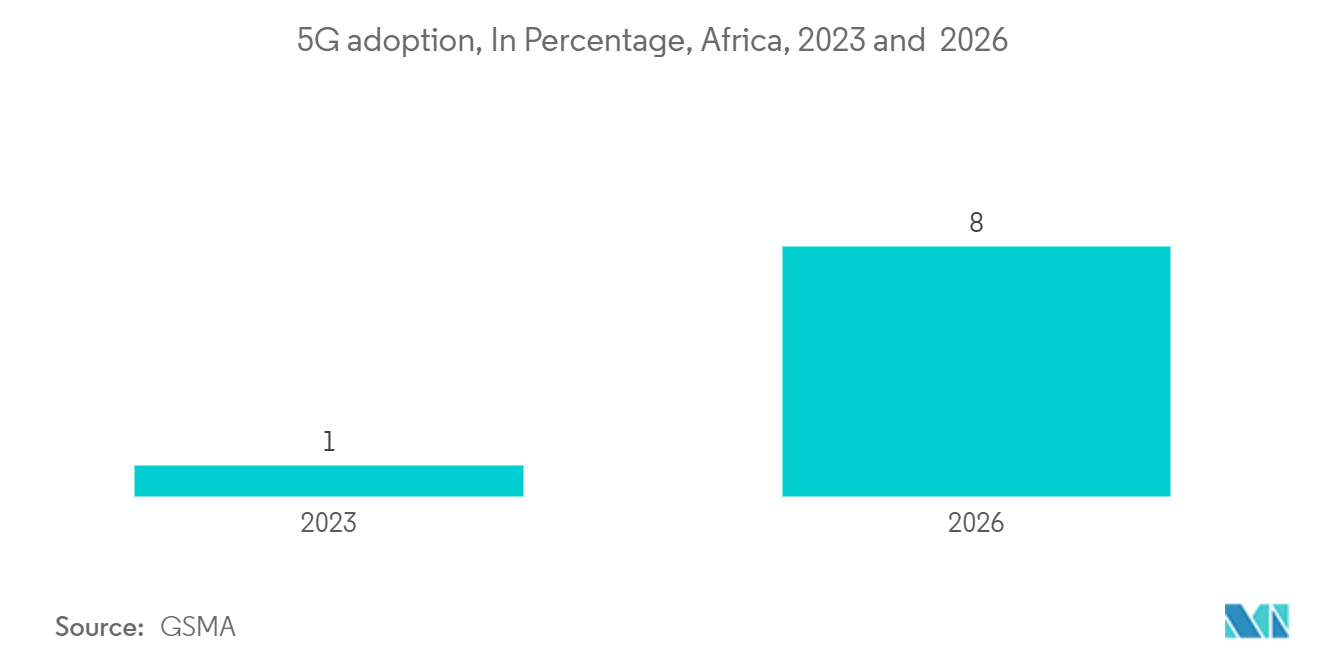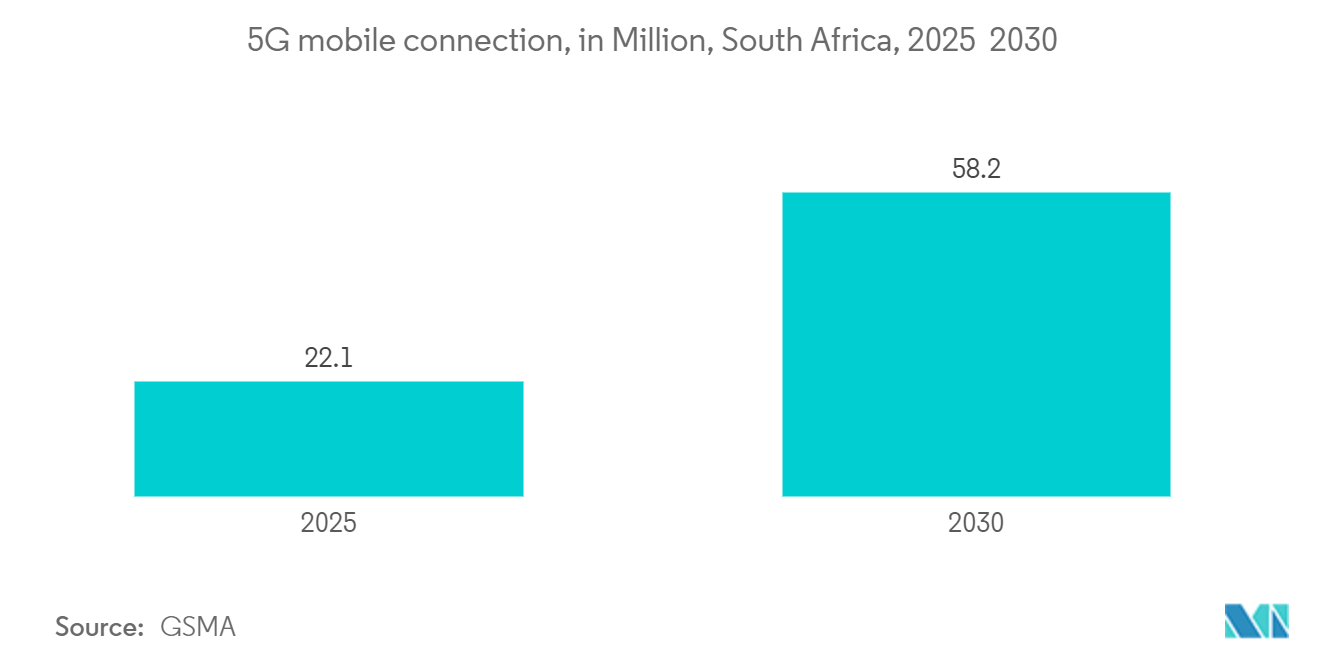Market Trends of Africa Structured Cabling Industry
Fiber Segment to Witness Major Growth
- The fiber segment is expected to witness growth in Africa during the forecast period, primarily due to the growing demand for high-speed internet access, driven by digital transformation, e-commerce, cloud services, and online media consumption, which has fueled the expansion of fiber optic networks across Africa. The widespread adoption of 5G technology and enhancements in broadband infrastructure are set to open lucrative avenues for the structured cabling market.
- Over the past five years, African nations have witnessed a notable surge in mobile internet connectivity. This increase is primarily attributed to increased investments by operators in mobile broadband networks (spanning 3G, 4G, and even 5G) and rising smartphone usage. While mobile broadband has been pivotal in linking people, addressing the gap in last-mile fixed broadband connectivity is crucial to delivering enhanced connectivity services to households and enterprises. As per GSMA data, 5G adoption is 1% in the region, which is expected to reach 8% by 2026.
- The proliferation of smartphones and mobile devices, coupled with rising mobile data consumption for applications like video streaming, social media, and mobile gaming, has led to increased investment in fiber backhaul infrastructure to support mobile networks. While fixed wireless access (FWA) services are not new in Africa, with many operators already offering 4G FWA, the landscape is evolving. Telkom South Africa disclosed that a significant 57% of its network's data traffic caters to FWA services, compared to 39% allocated to traditional mobile data services.
- While 5G coverage in the region remains concentrated in major cities, several countries are notably accelerating their 5G deployment. However, emerging markets in Africa, such as Ethiopia, Nigeria, Kenya, and Ghana, present significant growth potential for fiber optic cable deployments driven by urbanization and expanding digital services.
- Enterprises across various sectors, including banking, education, healthcare, and government, are undergoing digital transformation initiatives, driving the demand for reliable and high-capacity fiber optic networks for data transfer, cloud connectivity, and IoT deployments.

South Africa Holds the Largest Market Share
- South Africa holds the largest market share in the African structured cabling market due to the growing investment in telecommunications infrastructure, which includes fiber optic networks and 5G deployments. According to GSMA data, as of September 2023, 27 operators in 16 African markets had rolled out commercial 5G services. Additionally, operators in 10 more countries have pledged to introduce 5G in the near term. Notably, in South Africa, 41% of the population had access to 5G by September 2023.
- Businesses and enterprises in South Africa are expanding their IT infrastructure to accommodate growing data volumes, cloud services adoption, and emerging technologies like IoT (Internet of Things), driving the need for efficient and well-organized cabling solutions.
- Government initiatives aimed at improving 5G digital connectivity and promoting the adoption of ICT (information and communication technology) have contributed to the growth of the structured cabling market, especially in sectors such as education, healthcare, and government institutions. As per GSMA data, 5G mobile connection is expected to reach 58.2 million by 2030.
- Many market players are investing in building the 5G infrastructure in South Africa. For instance, as per a GSMA report, by 2025, the Mobile Telecommunication Network (MTN) aims to link 10 million households, focusing on South Africa and Nigeria, where 75% of these connections will be established. Their approach involves deploying mobile broadband modems to the top 30% of households, introducing 5G fixed wireless access (FWA) to the top 10%, and rolling out fiber connections to the top 1%.
- Growing concerns over data breaches and cybersecurity threats are driving the emphasis on data security and regulatory compliance in compliance with South Africa's POPIA (Protection of Personal Information Act). Consequently, there is a surge in investments directed toward secure and compliant cabling infrastructure. In 2023, South African organizations faced a record-high average data breach cost of USD 2.6 million (ZAR 49.45 million), marking an 8% increase over the preceding three years, as per IBM Security's "Cost of a Data Breach" report.


